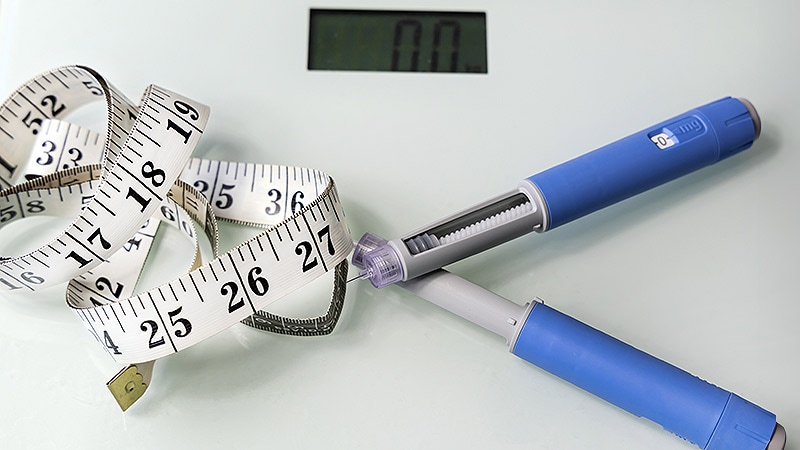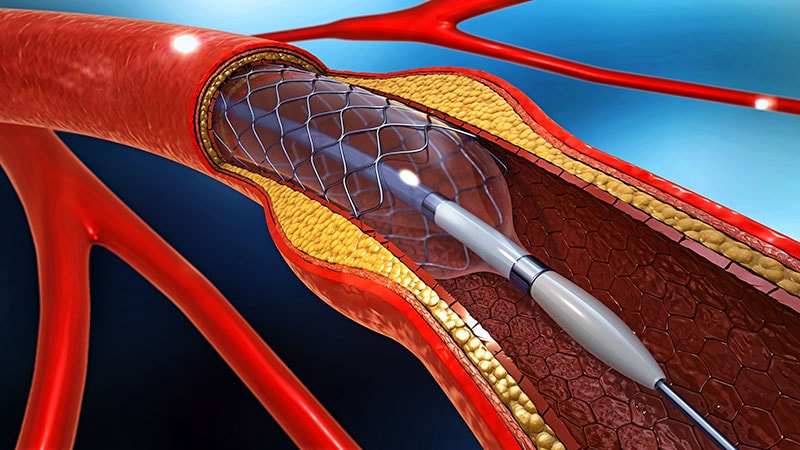Every time a violent incident involving an inmate with a mental illness is in the headlines, it tends to overshadow the important work done by correctional mental health professionals. This was the case recently when an inmate from Bollate Prison near Milan, Italy, fatally stabbed a coworker and seriously injured another while on day release, and then died by suicide after jumping from the Duomo terrace. Previously convicted of homicide in 2016, the prisoner had not demonstrated overt psychiatric symptoms. However, a former fellow inmate later claimed in an article published in Il Manifesto that he was exhibiting signs of distress.
This story forms part of a broader context of the situation of mental healthcare within prisons, which has evolved since Italy's 2008 reform that transferred responsibility for inmate healthcare from the Ministry of Justice to the Ministry of Health. The reform culminated a decade ago with the final closure of judicial psychiatric hospitals nearly 50 years after Franco Basaglia’s landmark 1978 reform that ordered the closure of all psychiatric hospitals in Italy, shifting the focus to community-based services.
“Integrating prison healthcare into the national health system took years, but it introduced the concept of clinical responsibility — so inmates are treated as patients,” Antonella D’Ambrosi, a psychologist who has worked in Italian prisons since 1996, told Univadis Italy, a Medscape Network platform. Since 2020, D’Ambrosi has led the Dependencies and Psychopathology Unit in the Frosinone Penitentiary Circuit.
A 2019 Constitutional Court ruling confirmed this paradigm shift, affirming that all citizens, including prisoners, have the right to physical and mental healthcare.
However, despite these reforms, overcrowding remains a serious problem. According to the latest report by the Antigone Association, an NGO that focuses on human rights within the penal and penitentiary systems, by the end of 2024, 62,153 people had been detained in Italy — approximately 2000 more than in 2023 — against an official capacity of around 47,000.
In San Vittore, Milan, overcrowding has reached 225%; in Brescia Canton Monbello, 205%; in Como and Lucca, 200%; in Taranto, 195%; and in Varese, 194%, the report stated. “There are now 59 institutions with an overcrowding rate higher than 150%, mainly the large metropolitan prisons, those with the highest number of admissions and the greatest tensions.”
This has dire consequences, especially for the most vulnerable, who are much more numerous within prison populations compared with the general population, even if estimates on the prevalence of psychiatric disorders vary.
A 2015 study in the journal Psychiatry Research of 300 inmates in Cagliari found that 58.7% had a psychiatric disorder compared with 8.7% in the general population. Another 2016 epidemiological study of 15,751 inmates across 57 facilities in six regions of Italy found that 67.5% had at least one clinical diagnosis. Among these, 41.3% (27.9%) had a psychiatric diagnosis. Other common health conditions included gastrointestinal disorders (14.5%), infectious diseases (11.5%), cardiovascular diseases (11.4%), endocrine, metabolic, and immunological disorders (8.6%), and respiratory illnesses (5.4%).
The Parma Initiative
Lorenzo Pelizza, MD, PhD, a professor at the Department of Biomedical and Neuromotor Sciences, University of Bologna, conducted an in-depth investigation into prison mental health in Parma, in the Emilia-Romagna region of northern Italy. He began working in the prison system by chance at a time when he needed to return to his hometown for family reasons. “When I asked for a transfer they told me, ‘We are happy to have you, but you will need to work in the prison — no one else wants to go there,’” Pelizza told Univadis Italy. “I accepted.”
A few months after his arrival, the team leader left for another position and Pelizza was offered their role. “I found myself working with many non-health professionals inside the prison — security personnel, social workers, and educators — and I kept hearing the same concern: psychiatrists' hours needed to increase because there is a need for psychiatric support. So I tried to collect data to determine what the needs were and what kinds of diagnoses were common."
The idea was simple: to systematically assess all new inmates upon entry, including transfers from other institutions, and then follow them for 1 year. The rollout was delayed by the COVID-19 pandemic; however, despite concerns regarding the risk of infection, the study continued. “We evaluated about 400 admissions ourselves, using consistent diagnostic criteria,” Pelizza said. “We found that the main issue, affecting more than half of the cases, was addiction.”
Among the psychiatric needs, most disorders are linked to depression and anxiety, which are often driven by detention. “We classify these as adjustment disorders, which can sometimes present with significant depressive symptoms,” he explained. “Serious mental disorders — the kind typically managed by community mental health services — made up only about 10% of cases.”
The findings, according to Pelizza and colleagues, challenge the common perception that more psychiatrists are urgently needed in prison – except from the perspective of prescribing medication, which they caution is not always appropriate. The study revealed that 63.1% of the inmates received at least one anxiolytic prescription, 20.3% received antidepressants, and 19.9% received antipsychotics. One third received at least one psychiatric consultation during detention, averaging 1.4 visits per inmate per year.
“Even in consultations outside of prison, drugs can be prescribed because this is what the patient expects. This also occurs in prisons, where the request for drugs is often excessive compared to needs, and not only in cases of addiction. Prescriptions often have the purpose of reassurance and sedation to immediately deal with a new situation. In many cases, it might be possible to provide that reassurance by listening to the needs of prisoners that are not strictly medical,” Pelizza said.
Stressors within prisons are countless, especially in remand prisons, where many inmates await sentencing in a state of extreme uncertainty. “There are people who are suddenly taken into custody and thrown into prison without warning. They arrive without a suitcase, without a change of clothes — completely unprepared,” Pelizza explained. “They sit in their cells, not even understanding where they are. They don’t know the rules, how to request basic items, or how to get in touch with their families.”
Pelizza vividly recalled one case. A Swedish man in his early twenties was arrested on the highway while riding in a taxi that he had taken to Milan from Bologna where he had grabbed a woman to steal her car. His attempt failed and he fled, but the woman was injured when she fell during the incident.
“When the boy arrived in prison, his mental state was completely altered. Only after a few days were we able to get him to tell his story — in English because he did not speak Italian — and we concluded that the trip he had suddenly decided to take to Italy was already linked to an alteration in his mental state, probably a manic phase in a bipolar disorder,” Pelizza said.
“In addition to trying to start a treatment inside prison, I was concerned with building an alternative path outside, since, among other things, he was in pretrial detention. It took 3-4 months, but we managed to bring him to our residential facility in Parma, where he remained for almost a year until the trial,” continued Pelizza.
At the trial, the young man was deemed unfit to stand trial because he was incapable of understanding or intending his actions at the time of the crime. He was released after being judged no longer in danger to himself or others, thanks to the therapy he had undergone in the interim. “This is a classic example. In prison, he could not have been treated, whereas in the residential facility, he received care and experienced no further clinical relapses,” Pelizza said.
Residences for the Execution of Security Measures
Pelizza's experiences in Parma are unique in many ways, not only because of the high standards of the public health system in the region of Emilia-Romagna, but also because the Department of Mental Health operates within the prison while also overseeing the general population and a residence for the execution of security measures (REMS), a facility introduced in the 2015 reform that replaced old judicial psychiatric hospitals (OPGs). REMS are intended for individuals who commit crimes but are deemed not prosecutable due to mental incapacity at the time of the offence but still cannot return home because they may pose a danger to themselves or others.
Currently, there are 32 REMS facilities in Italy. Each region is required by law to have at least one, although Calabria and Umbria have yet to establish their own. In total, 630 locations are available, as each REMS is legally limited to a maximum of 20 beds. An exception exists at Castiglione delle Stiviere, once home to the last remaining OPG, where 160 patients are housed, although they are formally divided into eight separate REMS units.
According to a document approved in February 2025 by the Superior Council of the Judiciary, around 700 individuals meet all the criteria for transfer to a REMS but are still waiting for a place — 45 are currently held in prison. The Ministry of Health has opposed the creation of additional REMS facilities, citing the principle summarized in the Superior Council of the Judiciary's report: “The more containers there are, the more they are filled.” Still, the ministry is reportedly considering a 20% increase in the number of facilities.
Giuseppe Nese, MD, is the director of the Multispecialty Department for Prison Health Services, Local Health Authority Caserta. He also serves as the coordinator of the Regional Inter-Institutional Group for Prison Mental Health and Secure Psychiatric Care in the Campania Region, which oversees four prison facilities, including a REMS, and has long collected and analyzed data to assess psychiatric needs. He believes that the current number of REMS places is sufficient and argues that a cultural shift across the entire system is needed. Despite the closure of the OPGs, he said that courts continue to favor detention, even though the spirit of the reform law is to reintegrate into society those who can be treated within the regular healthcare system.
“There is a widespread tendency in Italy to assign patients subject to temporary security measures to a REMS,” noted the Antigone Association report, which Nese edited. “Yet the law stipulates that such measures should be applied only when alternative options are inadequate for addressing both clinical needs and potential social risk.” He also pointed out that the European Court of Human Rights and Italy’s Constitutional Court have repeatedly emphasized the need to find alternatives to forced hospitalization — whether in former OPGs or REMS — stressing the importance of balancing care with public safety.
A common scenario, he explained, is that of a person who commits a serious crime without any apparent mental illness, only for psychiatric issues to emerge after their incarceration. “Sometimes it becomes clear that the individual may have committed the offense while mentally incapacitated,” Nese told Univadis Italy. “In such cases, even before sentencing, a judge can order the provisional application of a security measure in a REMS. However, the judge must also assess whether that person, though deemed not legally responsible due to mental illness, is socially dangerous. If they are not, no security measure should be applied.”
In essence, if a person is not considered a danger to society, they should remain in prison only if there is a risk of escape or reoffending. Otherwise, they await trial in freedom. However, Nese noted that this critical evaluation often arrives too late in the judicial process.
Another challenge of mental healthcare in the prison system in Italy is linked to the legal assessments that determine criminal responsibility. According to Nese, approximately 1 in 5 people on the REMS waiting list would not be eligible for admission as they are involved in more than one legal proceeding. It is not uncommon for someone to be deemed not criminally responsible in one case but responsible in another based on differing psychiatric evaluations.
Criminological Profiling and Analysis Center
A promising initiative launched approximately 18 months ago in Ficarolo, Veneto, on the border with Emilia-Romagna and Lombardy, aims to ease REMS waiting lists, reduce inconsistencies in psychiatric assessments, and improve the appropriateness of care. Psychologist Stefano Rambelli explained that the Criminological Profiling and Analysis Center (CePAC) is a facility dedicated to the observation and assessment of individuals with psychiatric disorders who have committed crimes.
The multidisciplinary team at CePAC, a private facility accredited by the National Health System, assists court-appointed experts by observing individuals, up to a maximum of 20 at a time, over several months.
In some cases, these individuals return to prison, where the most severe psychiatric cases are managed in specialized mental health protection units that provide continuous medical care, with inmates participating in group activities during the day and returning to their cells at night. Currently, 32 of these units operate within 17 penitentiary institutions, one per region, housing approximately 300 prisoners with serious mental health conditions.
“The shift to REMS created parallel systems of care, but the overall response remains inadequate,” said Ines Testoni, PhD, a professor of social psychology at the University of Padua, who has conducted extensive research on prison mental health and suicide prevention. “Many people with psychiatric conditions still end up in prison, where they cannot be properly managed.” Suicide is a sentinel event, an extreme signal of unmanageable psychological distress.
Estimates of suicide in prisons vary depending on the source. According to the National Guarantor for the Rights of Persons Deprived of Liberty, which compiled data from penitentiary authorities, there were 83 suicides in 2024, compared with 68 in 2023 and 84 in 2022. Ristretti Orizzonti, an online platform that provides daily updates on prison conditions in Italy, reported that 91 suicides occurred in 2024. It also estimated that total prison deaths from all causes reached an unprecedented 246 in 2024, up from 241 in 2023 and 212 in 2022.
Prison Staff Struggle Too
The psychological toll extends beyond inmates. “Prison staff face the difficult task of balancing punitive, rehabilitative, and therapeutic roles, creating conflicting expectations and emotional strain,” Testoni explained. She has also studied suicides among prison officers, for whom it is difficult to obtain reliable data. According to Ristretti Orizzonti, 148 prison officers died by suicide between 1997 and 2018.
Testoni led a qualitative study involving focus groups and semi-structured interviews with staff at eight prisons in northeastern Italy. The goals were to understand their perspectives, identify systemic challenges, and explore the need for more collaboration with external services. The study highlights the urgent need for enhanced training, greater staffing, and improved infrastructure.
“We need to invest in radically new solutions, which currently do not exist. Whenever a mental health issue emerges in prison, external care pathways must be available, even for those already convicted. For prison officers, we must create opportunities for them to process the relational and emotional challenges they face, free from stigma. Mental illness is a kind of ‘contagious’ suffering',” Testoni said.
She also emphasized that community doctors should pay close attention to the mental health of people who have been in prison or work there.
Fabio Turone is an Italian science journalist, founder of Agenzia Zoe, president of the Science Writers of Italy, and a board member of the European Federation for Science Journalism. He has reported for the BMJ, Nature, and Research Professional and was a 2016-2017 Knight Science Journalism Program Fellow at Massachusetts Institute of Technology, Boston.
Chiara Sabelli earned a PhD in particle physics in 2012 and later completed a master’s in science communication at the International School for Advanced Studies in Trieste. She has worked in science communication since 2017 and has been a journalist since 2019. She contributes to Nature Italy and Scienza in Rete.
This story was translated from Univadis Italy.


 Admin_Adham
Admin_Adham


